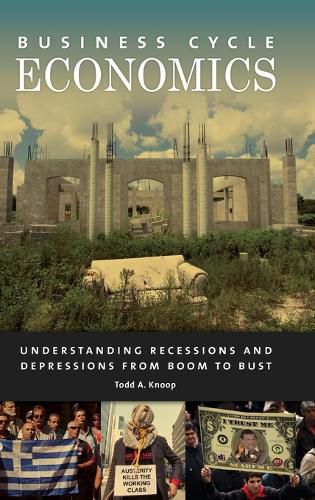Readings Newsletter
Become a Readings Member to make your shopping experience even easier.
Sign in or sign up for free!
You’re not far away from qualifying for FREE standard shipping within Australia
You’ve qualified for FREE standard shipping within Australia
The cart is loading…






Presents the empirical data of business cycles and the theories that economists have developed to explain and prevent them, and considers case studies of recessions and depressions in the United States and internationally.
Despite more than two centuries of debate, a definitive explanation of the causes of economic cycles still does not exist. Economists, politicians, and policymakers have argued many well-known theories as to why these peaks and slumps occur, and cyclical recessions and depressions continue in spite of the enormous intellectual reserves working to prevent them. This timely analysis presents a comprehensive overview of global economics, assessing older theories alongside of new ways of thinking to reveal the empirical methods needed to evaluate, forecast, and prevent future crises.
Educator and economist Todd Knoop provides explanations of influential macroeconomic theories that have shaped modern economics, such as Keynesian economics, Neoclassical economics, Austrian economics, and New Keynesian economics. In addition, he considers case studies of specific recessions and depressions, beginning with the Great Depression through the East Asian crisis and Great Recession in Japan and culminating with a detailed examination of the European debt crisis and the 2008 global financial crisis. The work concludes with a look at the insights gained from these fiscal events as well as the major questions that still remain unanswered as a result of these crises.
Features four primary forecasting techniques and assesses the effectiveness of these methods in forecasting actual business cycles
Examines the reasons behind the lessening frequency of recessions in postwar America
Makes the subject of economic crises timely and relevant by addressing the recent global financial crisis and the European debt crisis
Reveals how the collapse of the housing market led to a credit crunch and a global economic slowdown
$9.00 standard shipping within Australia
FREE standard shipping within Australia for orders over $100.00
Express & International shipping calculated at checkout
Presents the empirical data of business cycles and the theories that economists have developed to explain and prevent them, and considers case studies of recessions and depressions in the United States and internationally.
Despite more than two centuries of debate, a definitive explanation of the causes of economic cycles still does not exist. Economists, politicians, and policymakers have argued many well-known theories as to why these peaks and slumps occur, and cyclical recessions and depressions continue in spite of the enormous intellectual reserves working to prevent them. This timely analysis presents a comprehensive overview of global economics, assessing older theories alongside of new ways of thinking to reveal the empirical methods needed to evaluate, forecast, and prevent future crises.
Educator and economist Todd Knoop provides explanations of influential macroeconomic theories that have shaped modern economics, such as Keynesian economics, Neoclassical economics, Austrian economics, and New Keynesian economics. In addition, he considers case studies of specific recessions and depressions, beginning with the Great Depression through the East Asian crisis and Great Recession in Japan and culminating with a detailed examination of the European debt crisis and the 2008 global financial crisis. The work concludes with a look at the insights gained from these fiscal events as well as the major questions that still remain unanswered as a result of these crises.
Features four primary forecasting techniques and assesses the effectiveness of these methods in forecasting actual business cycles
Examines the reasons behind the lessening frequency of recessions in postwar America
Makes the subject of economic crises timely and relevant by addressing the recent global financial crisis and the European debt crisis
Reveals how the collapse of the housing market led to a credit crunch and a global economic slowdown